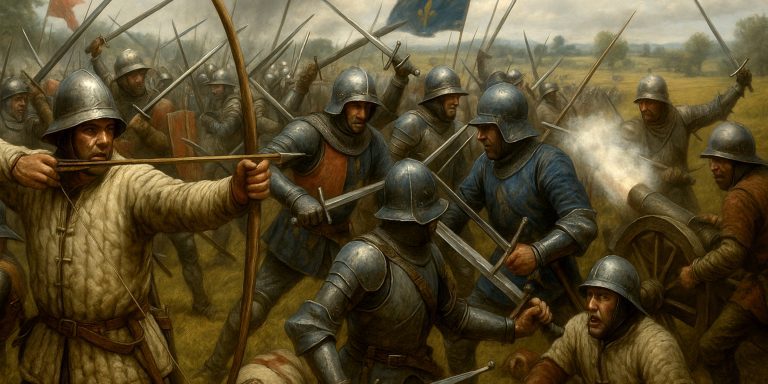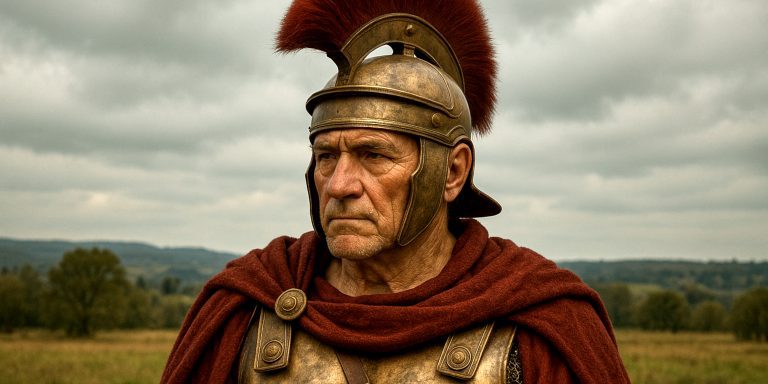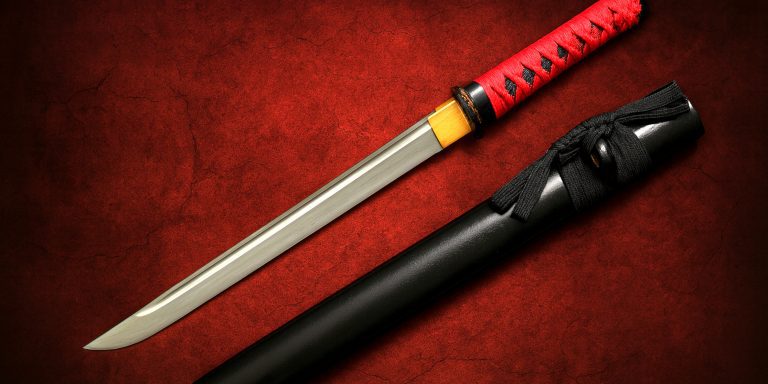
Let’s talk swords. More specifically: when exactly did the iconic samurai sword, yes, the sleek, razor-edged curved thing you probably picture when you say “katana”, first appear? I mean, beyond the cinematic swish, the myth and the cool factor. Because the truth is richer, a bit messier and far more fascinating.
The Straight Start: Chokutō and Early Blades
Before you had curves, you had straight-edged swords. In ancient Japan (think the Yayoi through to early Heian periods) iron-working arrives via Korea and China; early blades like the Chokutō were straight, single- or double-edged, and largely ceremonial or status symbols.
These swords lacked the dramatic curvature we now associate with samurai blades, but they laid the metallurgical and cultural groundwork.
Curvature Enters the Scene: The Tachi Era
As mounted warfare and cavalry became more common, the need for a blade optimised for slashing came into sharper focus. During the Heian period (794–1185 CE), Japanese swordsmiths began producing the Tachi, longer, curved, worn edge-down, crafted for a warrior on horseback.
The story of the legendary smith Amakuni (and his son) is often mentioned: supposedly seeing broken swords come back from battle around 700 CE, they experimented and created a new form of blade. That may lean into legend, but it signals early shifts in design.
The Katana Takes Shape (1185–1333 CE and Beyond)
Now we’re getting to the familiar shape: the slender, curved, single-edged blade we immediately identify with samurai warriors. The term Katana appears around the late Kamakura period (1185–1333 CE) and the blade design begins to crystallise.
During the Mongol invasions of 1274 and 1281, Japanese smiths observed how their weapons fared under real pressure and actively refined their craft.
So if you ask “when was the samurai sword invented?”, you’ll get different answers depending on how strict your definition is. If you mean “the curved samurai blade we all recognise today”, then sometime between the late 12th and early 14th centuries is a safe bet.
Why the Change? Form Following Function
It wasn’t just about looking cool. The evolution from straight to curved blade had practical reasons:
- Curvature aids slicing when on horseback or during rapid draw.
- The shift from large formations of mounted archers to closer combat pushed sword design toward more adaptable forms.
- Metallurgy improved. Japanese swordsmiths mastered layering steel (tamahagane), differential hardening and folding techniques that allowed thinner, sharper, tougher blades.
From Battlefield to Status Symbol
Once peace settled in under the Edo period (1603–1868), the katana moved from purely battlefield utility to status symbol, ritual object and aesthetic masterpiece. The blade retained its lethal roots but increasingly served as cultural identity, ritual and display.
Then, with the Meiji Restoration and industrialisation, the carrying of swords was restricted. Traditional swordsmithing was challenged; but the craft survived and today is an art form respected globally.
So… When Was It Invented?
If you’re after a single “invention date”, I’d say: while straight swords existed much earlier, the recognisable samurai curved sword emerged between the late 12th and early 14th centuries.
To give a few anchor points:
- Straight swords (chokutō) dominate up to around 900 CE.
- Curved tachi form becomes prevalent by the Heian period and into Kamakura.
- The term katana and its characteristic form solidifies in the late Kamakura period.
So, if you asked me to pick a date: let’s imagine around 1200 CE as a rough milestone for the katana’s birth. But this isn’t neat, because change was gradual.
Why This Matters
Looking at when the samurai sword was invented is more than trivia. It tells a story about Japan’s shifting warfare, social structure, craft traditions and cultural identity. The sword is both weapon and symbol. When you admire a finely crafted blade, you’re seeing centuries of adaptation, innovation and meaning.
Seven Swords Takeaway
In the end, the samurai sword didn’t spring into existence fully formed. It evolved, like cultures always do. Iron arrives. Straight swords rule. Cavalry arrives. Curves appear. Techniques improve. Peace arrives. The sword becomes more than a tool.
I like to imagine a swordsmith in the 13th century lighting his forge at dusk, testing a new curve on a blade, wondering if it will hold. That moment, I think, is where the samurai sword truly begins.



